Employees May Be Able To Access
- Long service leave and annual leave
- Deferred home loan payments
- Extra $550 job seeker allowance
- $750 ad-hoc payments
- Up to $20,000 access to super
- $1,500 fortnight Job Keeper payment
- Power relief
- Free childcare
- WA specific assistance
If you are currently employed and are anticipating some changes to your work arrangements as a result of COVID-19, before you do anything else, have an open conversation with your employer.
It’s important to see how you can work together during this time, as they will likely be feeling the pinch just as much as you are.
You may look to utilise long service leave and annual leave to get through this time or perhaps consider a part time arrangement for a short period of time.
It’s important to be across your budget during these times and we have made note of this in the following article – Tips on Budgeting and Working From Home (WFH).
Home Loans
The government has been working with banks to ensure that if home owners come under financial stress there is support from lenders.
If for some reason your employment situation changes, whether that be less hours or taking a short break from work, the mortgage shouldn’t become a major function of stress.
Some banks are offering up to 6 months of deferred payments, while most will offer a minimum of 1-3 months.
Job Seekers
If someone you know does happen to lose their job, the government has accelerated acceptance for Job Seeker allowances and added an additional $550 per fortnight on top of regular job seeker payments.
Some families may also receive a once off boost of $750 that was announced in the first round of stimulus.
A second $750 payment has also been released, but will only be received under special circumstances. See the above link for details.
How To Know If You Qualify
The amount at which your partner earns was originally around $48k. It has now been lifted to $80k. If your partner earns more than $80,000 p.a you will not be eligible for the Jobseeker Payment.
However you may get the supplement of $550 per fortnight. It will depend on your situation / employment structure.
If you’re already receiving support our you’re registering for more support, here are how the changes may affect you from the 20th of March 2020.
How To Get Access To Benefits
First you’ll need to create a MyGov Account. Once you have done that, follow the links below and follow the steps outlined on the Government website.
How to create a MyGov account https://www.youtube.com/watch?v=Cldy_brqh50
Then you’ll need to link a service to your MyGov account.
Then claim for Job Seeker Payment through MyGov. Instructions on how to make a claim are below.
For more information on payments and services, follow the link below.
Centrelink Payments and Service Finder.
For further advice on Centrelink services you can visit our Centrelink strategies page.
Companies Looking To Hire
- Services Australia is hiring 5,000 people.
- Domino’s is hiring 2,000 delivery drivers across the country.
- The NSW Government is hiring 1,000 people in the state.
- Coles is hiring more than 5,000 casual staff across the country.
- BHP will hire 1,500 people across the country.
- Telstra is hiring more than 1,000 people across the country.
- ANZ bank
- Mask manufacturer Med-Con is hiring 40 people in Victoria.
- Serco
- Ofcourse don’t forget the obvious places to look like Seek, Indeed and LinkedIn
Superannuation Access – Please Carefully Consider
As a last resort, access to superannuation rules have been relaxed. This will allow anyone who is in financial distress to access up to $10,000 in superannuation this financial year and up to $10,000 next financial year (from July onwards). We strongly encourage you to only take this up if you have no other choice.
The image below paints a pretty clear picture of the real potential cost of withdrawing super early, especially if you are younger. You can zoom in on the image for details around how calculations are made.

(source: Australian Services Union)
Further details on the ATO early release of superannuation can be found here.
You will have to link your ATO account to your MyGov account. Here are the details on how to link ATO to MyGov.
Job Keeper Payment
The Job Keeper payment is designed to keep employees in jobs. This is also targeted at employees who have already been stood down or required to go on leave.
If you are a part of a business which has been significantly impacted by the Coronavirus crisis, this could apply to you.
The Job Keeper payment allows employers to receive $1,500 per fortnight to pay employees to keep them on.
As an employee, all you have to do is to approach your employer and let them know that this is something they can do (if they don’t already know about it).
The businesses is then required to register for it and will be paid the amount (by the government) from May onwards.
Payments will be backdated all the way up to around the middle of March (perhaps earlier) to account for anyone that was laid off or stood down before May so that they can be compensated during the early stages of the difficult period.
For employees who are eligible to go back to work thanks to the Job Keeper, you will not be eligible for Job Keeper and Job Seeker at the same time, only one. You are either employed (stood down etc. included) or not employed.
Which Businesses Are Eligible?
Businesses that have had a hit to their turnover of more than 30% (for small and medium businesses) since March 1 will be eligible to keep their employees and pay them through the Job Keeper payment.
Large businesses over $1 Billion in turnover will have to had been impacted by 50% or more.
Businesses will be able to apply for this payment through a button on the ATO’s website (coming soon)
If you require further details on any of the above measures, please speak with your Financial Adviser.
For non clients, please call (08) 6144 4000 to book an obligation free chat with one of our Financial Adviser’s to help you get through this time.
Power Relief
$91 million allocated to double the Energy Assistance Package (EAP) in 2020-21 to provide additional support to vulnerable Western Australians. The payment will increase from $300 to $600 for eligible concession card-holders.
Similar initiatives are being rolled out in the eastern states.
Free Childcare
Around 1 million Australian families are set to receive free child care during the coronavirus crisis.
The government is looking to deliver relief to families so parents who are working can continue to provide for their families and critical workers can get access to childcare.
WA Specific Assistance
A freeze will be placed on household fees and charges, including electricity, water, motor vehicle charges, the emergency services levy and public transport fares
an allocation of $402 million in the 2020-21 Budget will go towards paying for the freeze
More can be found on the WA state government website.



